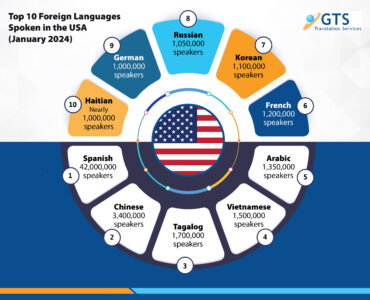by Luke Smith
It’s estimated that 15 to 20% of the world’s population is neurodiverse. That simply means that this subset of people thinks differently than what is considered “normal.” Their brains think things through and process information differently. For some, it’s a more obvious difference than others.
While there is nothing “wrong” with being neurodiverse, these people can often have difficulty communicating directly with neurotypical people. Some of the most common types of neurodivergent conditions include autism, ADHD, and dyslexia. At different levels, these conditions can impact everything from verbal cues to written communication and body language.
Because of their differences, especially when it comes to language, neurodiverse people are often misunderstood. That can create issues at school, in the workplace, and even when it comes to relationships. Not only is it important for neurotypical people to develop a better understanding of neurodiverse communication but to also be able to understand social language and our differences so information can be translated and shared more effectively.
Let’s take a closer look at how we can bridge the gap between neurotypical and neurodiverse communication through a deeper understanding of the languages and a stronger ability to translate.
Understanding Social Language
Social language is the communication we use to interact with other people. We learn communication cues from a very young age — typically from family, friends, and the community we grow up in. You learn unwritten rules of communication over time that you can use around the people in your direct circle, but most people also naturally learn how to adapt to different rules outside of their social circles.
The three major components of social language are:
- Using it;
- Changing it;
- Following rules, like taking turns between talking and listening, etc.
Most neurotypical people don’t think much about the rules of social communication because they come naturally. However, it can be harder for neurodiverse people to pick up on things like social cues, body language, and other unwritten communication rules. That doesn’t mean they’re somehow “less than” when it comes to communicating effectively. It just means their social language is different from your own, and it’s important to find ways to translate.
Neurodiverse Differences
So, how do neurodiverse people communicate differently? Everyone is unique, and some neurodivergent individuals are able to communicate more like neurotypical people. However, some of the most common language differences between neurodiverse and neurotypical communicators include:
- How emotions are processed;
- Empathy;
- Nonverbal communication;
- Different value systems.
Words themselves can even have more weight for neurodivergent people. They tend to take things literally and don’t often understand innuendos or metaphors. That doesn’t mean they aren’t intelligent. In fact, many neurodiverse individuals have incredible skills and abilities — it’s just a matter of taking the time to learn about them.
Finally, it’s not uncommon for neurodiverse people to handle stress and adversity differently. Many of them are hypersensitive to rejection, pain, and anything that can feel overly stimulating. No one likes dealing with stressful situations, but it can be crippling for a neurodivergent person.
These differences aren’t necessarily hard to overcome. However, the burden often falls on the neurodivergent. They’re made to feel misunderstood and different so they’re often the ones left to find better ways of communicating. That’s not always possible without translation efforts from neurotypical groups.
Best Practices for Translating
Understanding the differences in processing and communication between neurotypical and neurodiverse people is just the beginning. It’s essential to know how the two groups can effectively communicate and translate their work and experiences with each other. So, how can information be shared?
We can start by using technology to our advantage. For example, artificial intelligence (AI) is being used all over the globe, impacting just about every modern industry including translation efforts. AI relies on data collection to find and process patterns. It can use those patterns to aid research into neurodiverse language. More importantly, it can use what it learns to promote a neuromixed academia that can translate information to be shared with both neurodivergent and neurotypical people. Machine learning can also be used to create things like subtitles on videos, which can connect with everyone no matter their social language.
Even without technology, we can bridge the gaps between social language differences. Start by checking your assumptions. If you’re interacting with a neurodiverse person and you automatically assume they don’t communicate as well as you just because of their differences, you’re not giving their social language a chance.
Some neurodiverse people can even serve as translators between other neurodivergent and neurotypical individuals. People who are able to do that can see clearly how both sides communicate and work to fill any gaps and break down barriers.
Because there’s such a large population of neurodiverse people across the globe, it’s essential for everyone to be able to translate how their social language differs. When we work to bridge the language gap, communication becomes clearer and we’ll focus less on our differences and more on building each other up through strong connections.
About the Author
Luke Smith is a writer and researcher turned blogger. Since finishing college he is trying his hand at being a freelance writer. When he isn’t writing you can find him travelling, hiking, or gaming. You can keep up with his writing on his Twitter.






